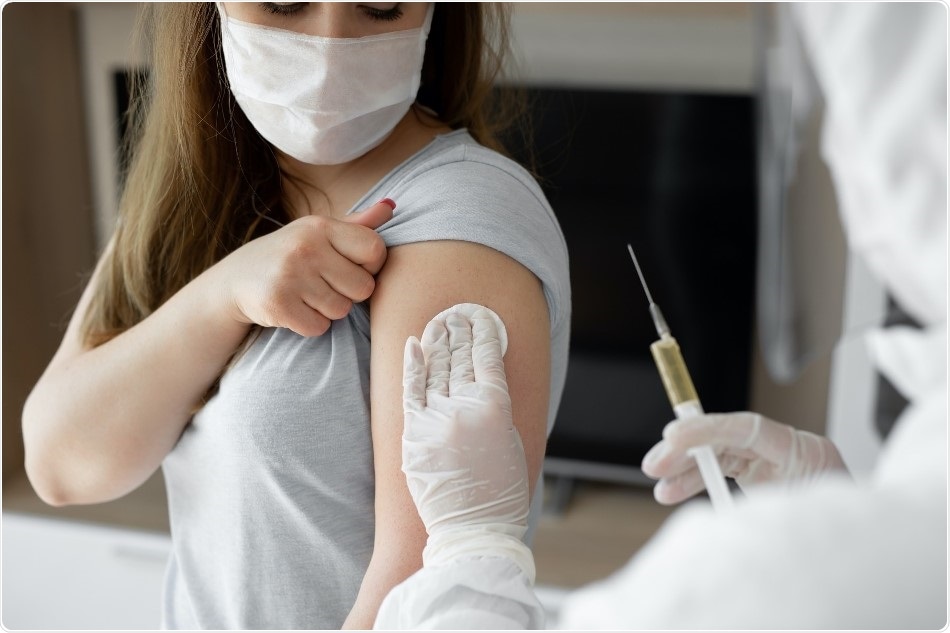Looking for a new strategy in the long-running battle against the SARS-CoV-2 virus, researchers have developed nanobodies that are able to neutralize virus variants in two different manners.

Though vaccination is enabling the resumption of some pre-pandemic activities in parts of the world, SARS-CoV-2 is rapidly working its way around vaccines by mutating itself. The study findings suggest nanobodies could be promising tools to prevent COVID-19 mortality when vaccines are compromised. Image Credit: Shutterstock.com
During laboratory experiments, the researchers discovered two classes of compounds that were effective against the virus variants. Through different mechanisms, the nanobodies in each group of molecules bypassed mutations and disabled the ability of the virus to attach to the receptor that allows it to enter host cells.
Although vaccination is allowing some pre-pandemic activities to resume in some parts of the world, SARS-CoV-2 is mutating itself by swiftly working its way around vaccines. In this analysis, the nanobodies disabled three developing variants Beta, Gamma, and Alpha.
Companies have already started introducing the variants of concern into the construct of booster shots of the existing vaccines. But the virus is constantly mutating, and the speed of mutation may be faster than we can capture. Therefore, we need to utilize multiple mechanisms to control the virus spread.”
Kai Xu, Study Co-Lead Author and Assistant Professor, Veterinary Biosciences, The Ohio State University
The Nature journal has published an accelerated article preview of this study online.
Nanobodies are, in essence, antibodies extracted from the immunization of camelid mammals, like alpacas, llamas, and camels. These antibodies can be re-designed into very small molecules that imitate the structures and functions of human antibodies.
In this analysis, the research team immunized llamas to create single-chain antibodies against SARS-CoV-2. They also inoculated “nanomice,” or transgenic mice, with a camelid gene designed by Jianliang Xu in the laboratory of Rafael Casellas—a senior scientist from the National Institute of Arthritis and Musculoskeletal and Skin Diseases (NIAMS)—to produce nanobodies similar to those generated by camelids.
To boost the potency of nanobodies, the researchers first immunized the animals with the receptor-binding domain (RBD), a portion of the viral surface spike protein, and then administered booster doses comprising the whole spike protein.
By using this sequential immunization strategy, we generated nanobodies that can capture the virion by recognizing the receptor binding domain with very high affinity.”
Kai Xu, Study Co-Lead Author and Assistant Professor, Veterinary Biosciences, The Ohio State University
The team narrowed down the potential molecules from a wide library to six by testing the neutralizing capacity of different nanobodies. They achieved this by mapping the RBD surface, performing structural and functional investigations, and quantifying the strength of their affinity.
The coronavirus is quite infectious because it attaches strongly to the ACE2 receptor to enter the cells in the human lungs and nasal cavity, where it replicates to infect new cells. The receptor-binding domain located on spike protein is critical for its ability to bind to ACE2.
That RBD-ACE2 interface is on the top of the receptor binding domain – that region is the primary target for the protective human antibodies, generated by vaccination or previous infection, to block the viral entry. But it is also a region frequently mutated in the variants.”
Kai Xu, Study Co-Lead Author and Assistant Professor, Veterinary Biosciences, The Ohio State University
According to the researchers, the way mutants have evolved, to date, indicates that long-term dependence on existing vaccines will ultimately be compromised because the effectiveness of antibodies is considerably affected by those mutants at the interface.
“We found that certain nanobodies can recognize a conserved region of the receptor-binding domain, a hidden location that is too narrow for human antibodies to reach,” added Xu.
And binding at this site, in spite of being a bit far from where the RBD attaches to ACE2, the nanobodies were still able to accomplish what they were intended for—that is, prevent SARS-CoV-2 from penetrating a host cell.
The other set of nanobodies, which were drawn to the RBD-ACE2 interface, could not disable some variants while they were in their original form. But when the researchers designed this group into homotrimers (three copies linked together), the nanobodies were able to neutralize the virus effectively. In the same way, changing the structure of the nanobodies bound to the conserved region of RBD also improved their efficacy.
Although additional research works are needed, the results imply that nanobodies could be a useful tool for preventing COVID-19 mortality when immunizations are affected, added Xu.
“Our future plan is to further isolate antibodies specifically against emerging variants for therapeutic development, and to find a better solution for vaccines by learning from those antibodies,” concluded Xu.
Source:
Journal reference:
Xu, J., et al. (2021) Nanobodies from camelid mice and llamas neutralize SARS-CoV-2 variants. Nature. doi.org/10.1038/s41586-021-03676-z.